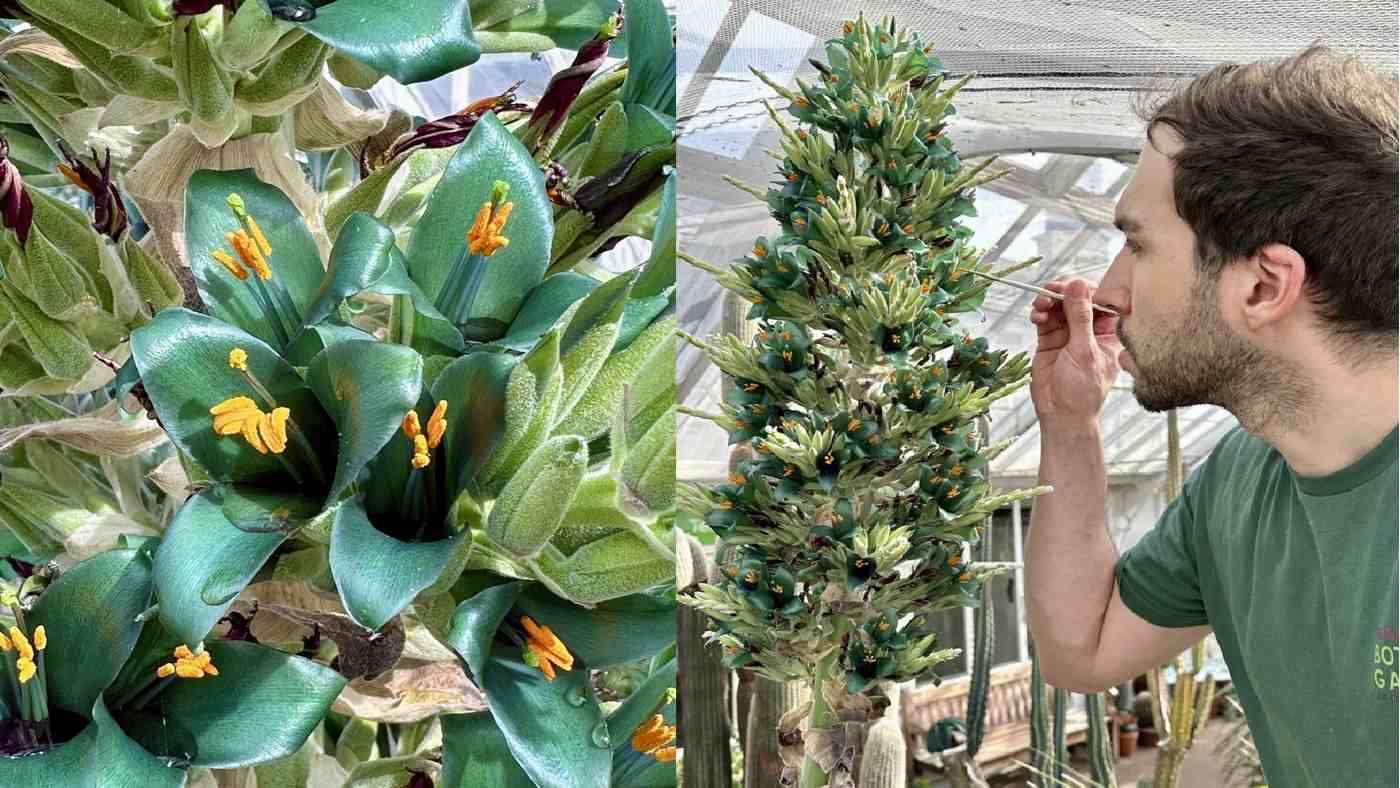"Hello, Voyager!" Celebrated Spacecraft Is Once Again Transmitting After Nasa Repair from 15 Billion Miles Away
Last November, one of NASA's most famous craft, Voyager 1, stopped transmitting messages to mission control at JPL.

At the Birmingham Botanical Gardens (BBG), a plant that most people will never see flower has sprouted its azure blooms for the first time in over 10 years.
This incredibly rare event has turned the plant, a bromeliad called - Puya alpestris - into a "sapphire tower."
Native to the Chilean Andes at altitudes above 6,000 feet, P. alpestris is a distant relative of the pineapple. Brought to the Arid Glasshouse at the BBG almost 20 years ago, this is the first time the plant has flowered.
It isn't an endangered species, but the flowering of the specimen at the BBG is allowing botanists to hand-pollinate other members by gently tapping the stamens with a paintbrush.
In the wild, the plant relies on hummingbirds to pollinate it, who come to feast on the sapphire tower's nectar-rich flowers.
"Each flower only lasts a few days, giving us a limited window of time to give nature a helping hand. In the absence of its natural pollinators, we will attempt some hand pollination instead," says Senior Glasshouse Horticulturist, Alberto Trinco.
"It is very slow-growing, so to witness its spectacular blooms is both exciting and rare," he adds. "Hopefully, pollinating the flowers with the brush to obtain seeds will allow us to secure the presence of this amazing species in our collection for future generations to come and admire."
There are many plants that bloom in multi-year intervals. Scientists often don't know why.
Like a solar eclipse or a comet, visitors to the BBG have the opportunity to see this plant flower now, but may have to wait another decade for another chance.
SHARE This Beautiful Phenomenon Of Nature With Your Friends…
Be the first to comment